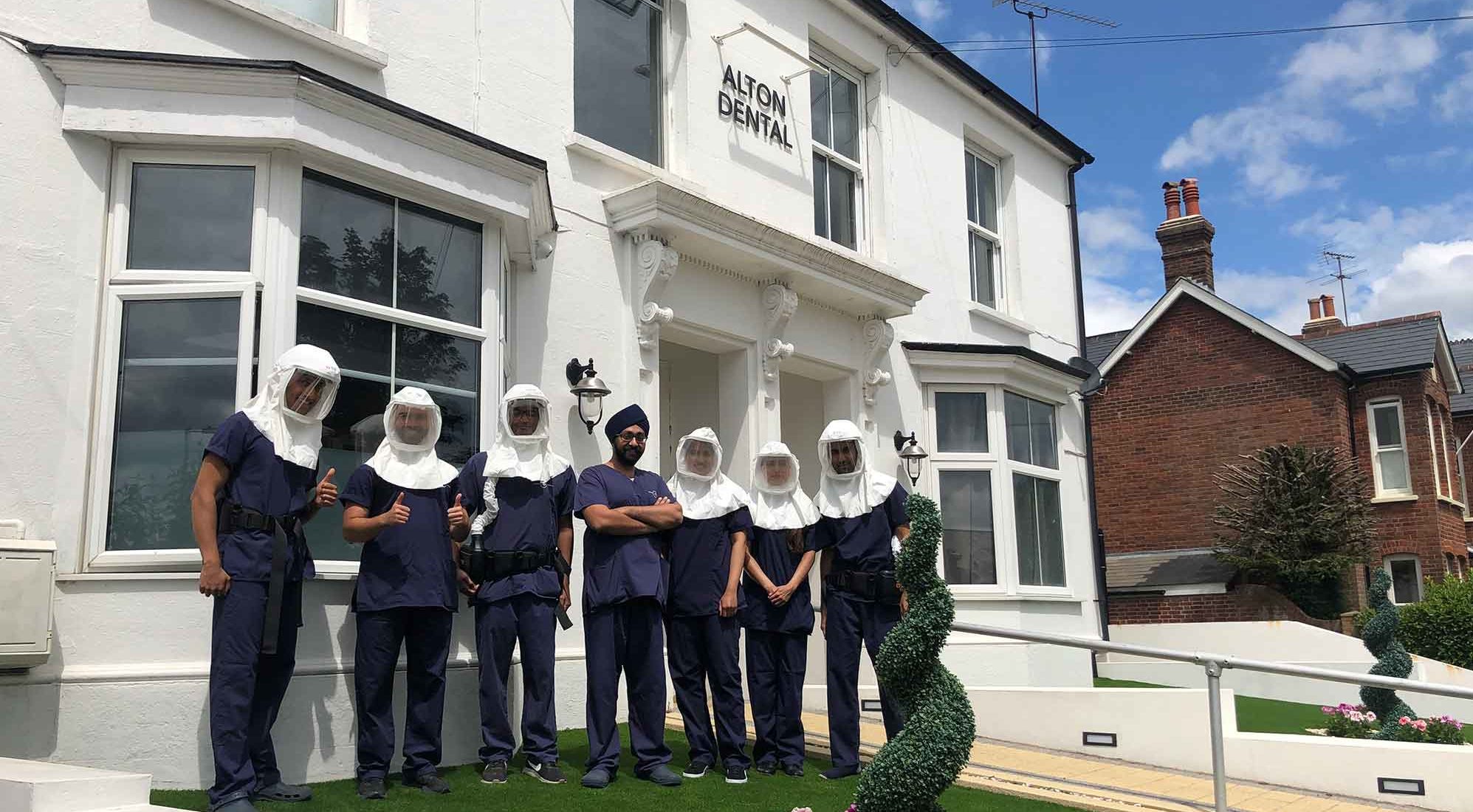 Hardeep Safri discusses PAPR – a PPE solution that allows dentists to wear loupes and keep facial hair.
Hardeep Safri discusses PAPR – a PPE solution that allows dentists to wear loupes and keep facial hair.
COVID-19 and UK dentistry – the current status
Keeping patients and staff safety in mind, the chief dental officer for England advised all dental practices to close from the 25 March 2020.
The advice was:
- All routine, non-urgent dental care should stop and defer until otherwise advised
- All practices should establish (independently or by collaboration with others) a remote urgent care service, providing telephone triage for their patients with urgent needs during usual working hours, and whenever possible treating with advice, analgesia and antimicrobial means where appropriate
- If you cannot manage the patient’s condition by these means, then they will need a referral to their local urgent dental care system.
Some practices have since opened from the 8th of June (36%), but the majority remain shut for weeks. One of the main factors is shortages of PPE. The British Dental Association recommends that dental practices should consider all patients as if they have COVID-19 and adopt universal precautions to ensure staff, patients, clinicians and other members of the public who attend the practice stay safe.
Public Health England recognises the highest risk of transmission of respiratory viruses is during aerosol generating procedures of the respiratory tract. The use of enhanced respiratory protective equipment is indicated for health and social care workers performing or assisting in such procedures. Dental procedures are classified as aerosol generating procedures. Therefore, recommendations for dentistry include a filtering face piece 3 (FFP3) respirator.
Is a PAPR the answer?
Powered air-purifying respirator (PAPR) has been successfully sourced and tested by Imperial College London. Medical teams both in the UK and Wuhan perform high-risk operations using it.
This could provide the protection needed from aerosol generating procedures (AGPs) in dentistry.
Aerosol generating procedures
Most dental procedures that use mechanical instrumentation will produce airborne particles.
Dental handpieces, ultrasonic scalers, air polishers and air abrasion units produce the most visible aerosols. Each of these instruments remove material from the operative site that becomes aerosolised by the action of the rotary instrument, ultrasonic vibrations or the combined action of water sprays and compressed air.
The water spray usually is the portion of the aerosol that is most visible to the naked eye.
Viral particles aerosolised
The current scientific consensus is that most transmission via respiratory secretions happen in the form of large respiratory droplets rather than small aerosols.
The problem occurs when viral particles are aerosolised by a cough, sneeze, or dental care.
In these instances, particles can potentially travel across far greater distances. With estimates up to 20 feet from an infected person. And then incite secondary infections elsewhere in the environment.
A partnership between engineering and dentistry
Dr Qilei Song – lecturer in chemical engineering at Imperial College London discussed the prospect of using the PAPR technology in a dental practice setting after its use on the Wuhan frontline and various London hospitals (Imperial College London, Guys & St Thomas Hospital, London Lewisham Hospital, University College London Hospitals).
Loupes are an integral part of dentistry. They provide better visual acuity, improved posture, reduced eye strain and improved diagnosis.
Tecmen PAPRs are spacious enough to accommodate dental loupes under the hood. The highly transparent screen provides a clear field of vision. PAPRs require testing to ensure there is adequate space for the loupes and the light before making the investment.
HEPA filter
The P3-level HEPA filter in a PAPR provides high-efficiency filtration of aerosol particles containing coronavirus with a size of 60-140nm. It provides a capture efficiency of 99.97% compared to 94% for an FFP2 mask, 95% for an N95 mask, & 99% for an FFP3 mask.
PAPR – a solution for BAME frontline workers
Evidence indicates markedly higher mortality risk from COVID-19 among black, Asian and minority ethnic (BAME) groups. But deaths are not consistent across BAME groups.
Similarly, adverse outcomes are seen for BAME patients in intensive care units and amongst medical staff and health and care workers.
We do not know the exact reasons for this in BAME populations. There may be a number of contributing factors in the general population such as overrepresentation of BAME multi-family and multi-generational households, co-morbidity exposure risks, and disproportionate employment in lower band key worker roles.
For health and care workers, there are increased health and care setting exposure risks. Sikh frontline staff may have facial hair for religious reasons. They may fail a conventional fit test due to inability of an adequate seal between the face and the mask.
PAPR may offer the option to keep their faith and serve their patients safely.
For more information about PAPRs, visit www.weldfastuk.co.uk.


